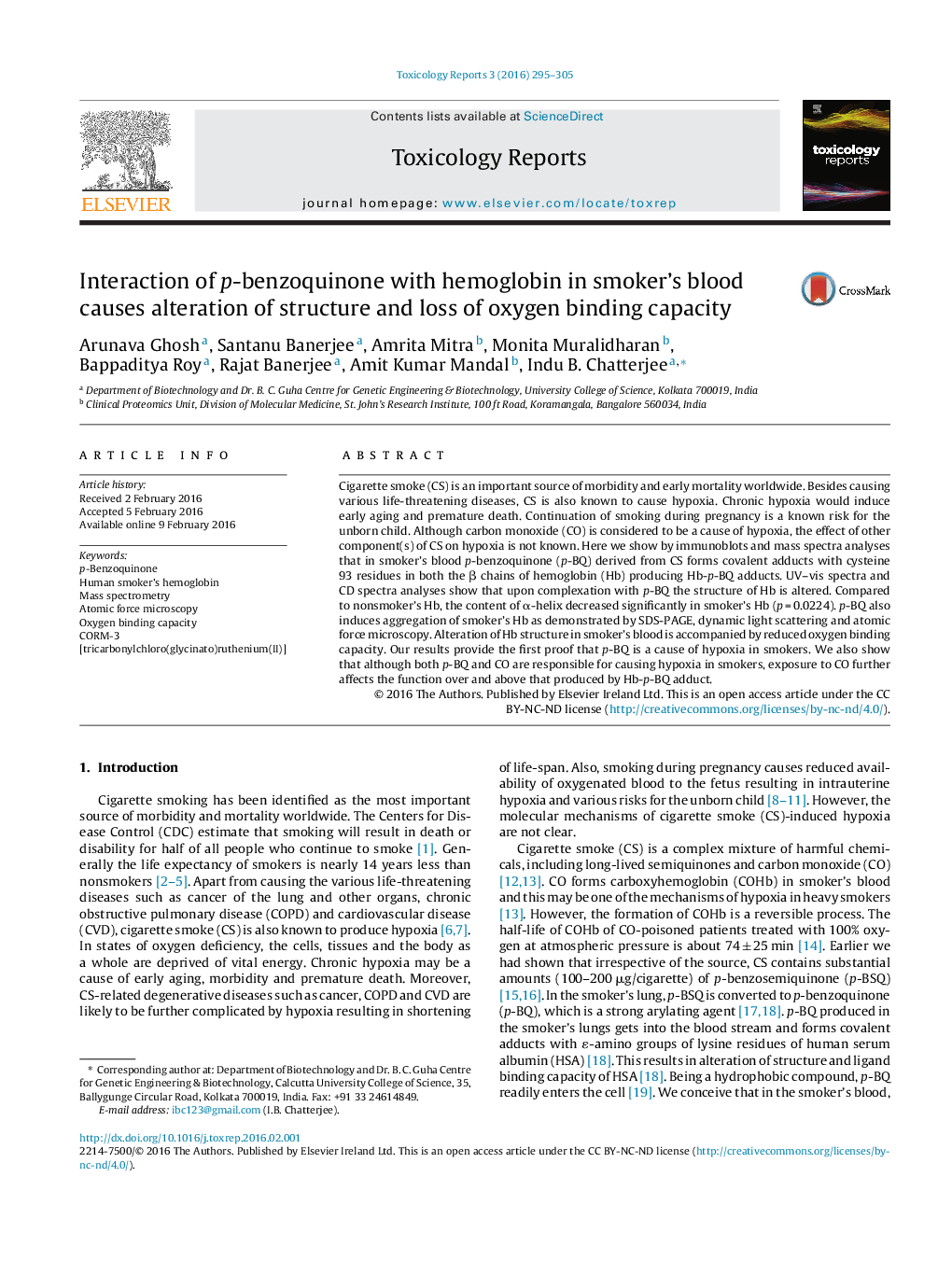| Article ID | Journal | Published Year | Pages | File Type |
|---|---|---|---|---|
| 2572133 | Toxicology Reports | 2016 | 11 Pages |
Cigarette smoke (CS) is an important source of morbidity and early mortality worldwide. Besides causing various life-threatening diseases, CS is also known to cause hypoxia. Chronic hypoxia would induce early aging and premature death. Continuation of smoking during pregnancy is a known risk for the unborn child. Although carbon monoxide (CO) is considered to be a cause of hypoxia, the effect of other component(s) of CS on hypoxia is not known. Here we show by immunoblots and mass spectra analyses that in smoker’s blood p-benzoquinone (p-BQ) derived from CS forms covalent adducts with cysteine 93 residues in both the β chains of hemoglobin (Hb) producing Hb-p-BQ adducts. UV–vis spectra and CD spectra analyses show that upon complexation with p-BQ the structure of Hb is altered. Compared to nonsmoker’s Hb, the content of α-helix decreased significantly in smoker’s Hb (p = 0.0224). p-BQ also induces aggregation of smoker’s Hb as demonstrated by SDS-PAGE, dynamic light scattering and atomic force microscopy. Alteration of Hb structure in smoker’s blood is accompanied by reduced oxygen binding capacity. Our results provide the first proof that p-BQ is a cause of hypoxia in smokers. We also show that although both p-BQ and CO are responsible for causing hypoxia in smokers, exposure to CO further affects the function over and above that produced by Hb-p-BQ adduct.
